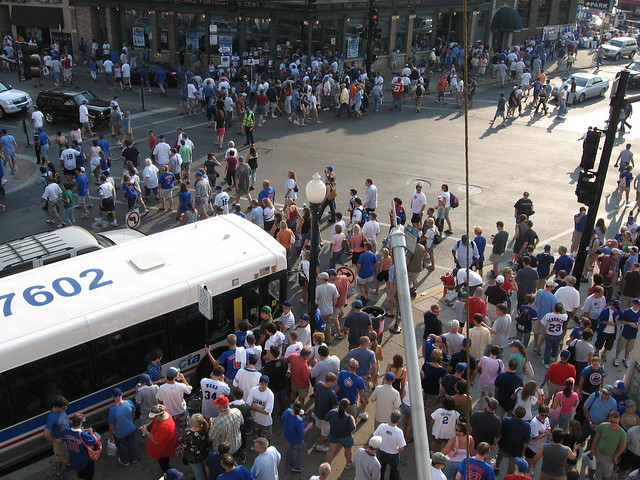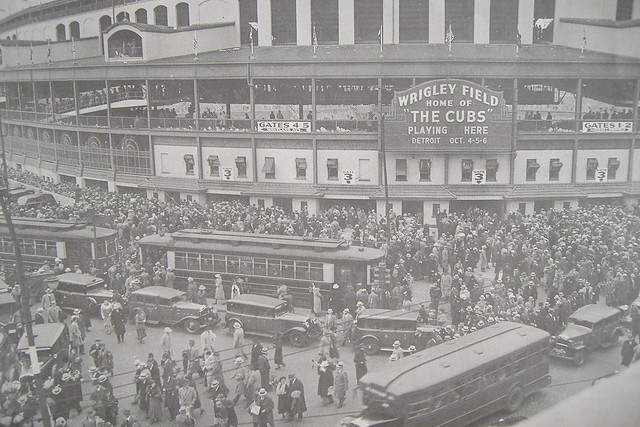
Two local politicians have proposed changing the streets around Wrigley Field to help defend it from terrorist attacks. Instead we should be looking at ways to protect the area from an excess of car traffic.
U.S. representative Mike Quigley (5th district) recently floated the idea of pedestrianizing Clark and Addison Streets during game days to prevent attacks. A spokesperson for Quigley clarified that while he hasn't proposed anything specific yet, he's interested in restricting private vehicle traffic during games but allowing buses and pedestrians to use Addison and Clark.
Mayor Rahm Emanuel has previously rejected the idea of pedestrianizing these streets. But on Wednesday he announced he'd seek federal funding to widen the sidewalk on the south side (Addison) of the ballpark by four feet and add concrete bollards or planters to improve security.
"There [are] ways to achieve the security without shutting down Clark and Addison," he told the Tribune. "We can do it in another way without all the other kind of ramifications that shutting down a major intersection [would entail]."
Quigley's office released a statement yesterday endorsing Emanuel's plan and offering help secure the federal funding.
While widening the sidewalk is a step in the right direction, more should be done to improve pedestrian and transit access to Wrigley. As it stands, motor vehicles can already barely get through Addison and Clark before and after games, when some 42,000 fans flood the intersection, and pedestrians in the street are at risk of being struck.
Setting aside the question of whether pedestrianizing the streets would thwart would-be car bombers, banning private vehicles on game days would make it easier for people to walk, take transit, and bike to Wrigley. It would also help prevent crashes and make the the area around the stadium a more vibrant public space.
There's plenty of precedent for pedestrianizing major Chicago roadways for special events. During games and concerts at the United Center, Madison Street is closed for two blocks to all vehicle traffic except buses and taxis. And, of course, neighborhood fests are held annually on dozens of streets like Division, Chicago, and Cermak.
It makes little sense to allow drivers traffic to crawl through the Addison/Clark on Cubs game days. Most motorists are heading to or from parking areas that can be accessed via other routes.
And driving on game days, and all other days, in the neighborhood is about to become even less efficient. Construction will start next month on a new mixed-use development at the southeast corner of Addison/Clark that will feature storage for 405 cars.
Also on deck are a new hotel at the northwest corner and a new plaza located between the stadium and Clark. When those projects are finished, there will be even more foot traffic in the area.
The Cubs team have already taken steps – some of them required by the 2013 agreement that allowed for the renovation and expansion the stadium – to encourage people not to bring cars into the neighborhood. They offer a complimentary bike valet near the ballpark, plus free remote car parking and shuttle bus service a couple of miles away
Eliminating car traffic at Addison/Clark would be another sensible measure to reduce Wrigleyville traffic congestion, encourage greener ways of getting to the ballpark, and improve the fan experience.





